Phylum Platyhelminthes [ZOOL110, Exam 3]
1/26
There's no tags or description
Looks like no tags are added yet.
Name | Mastery | Learn | Test | Matching | Spaced |
|---|
No study sessions yet.
27 Terms
lophotrochozoa (& which phyla are included?)
definition: one of two distinct clades within the protostomes
defining trait: have either a horseshoe-shaped feeding structure (lophophore) or a larval form (trochophore)
includes: annelids, platyhelminthes, mollusks
ecdysozoa (& which phyla are included?)
one of two distinct clades within the protostomes
defining trait: have a cuticle that is molted as their bodies grow
includes: nematodes and arthropods
lophophore
a horseshoe-shaped feeding structure characteristic of some lophotrochozoa
trochophore
a larval form characteristic of some lophotrochozoa
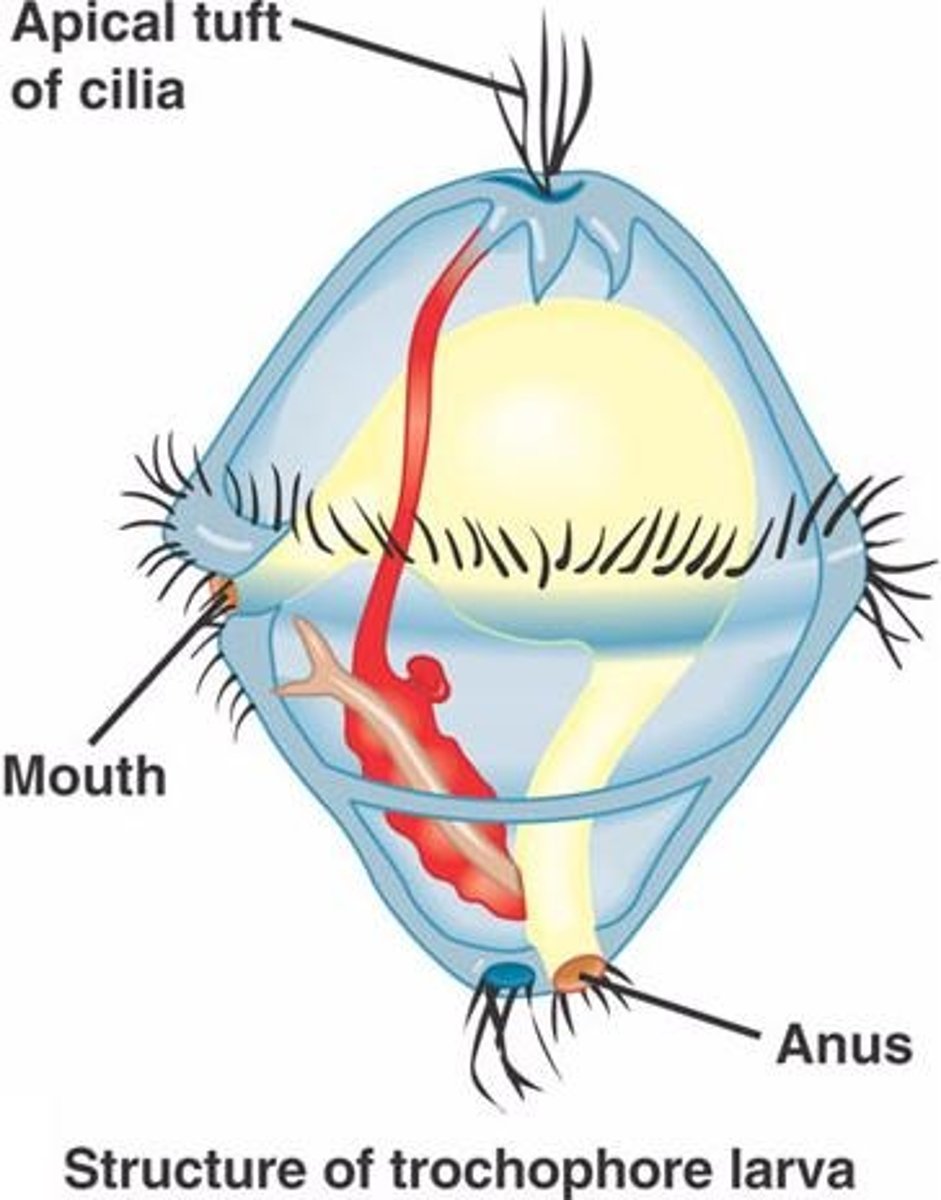
cephalization
concentration of nervous tissue and sensory organs in the head
likely developed for bilateral symmetry (front-facing animals)
flatworm flame cells
specialized excretory cells that remove excess water from the body of flatworms by beating flagellae
Platyhelminthes reproduction
can be asexual or sexual;
most are hermaphroditic / monoecious;
asexual reproduction is done via binary fission or budding
budding
a form of asexual reproduction in which a new organism grows out of the body of a parent
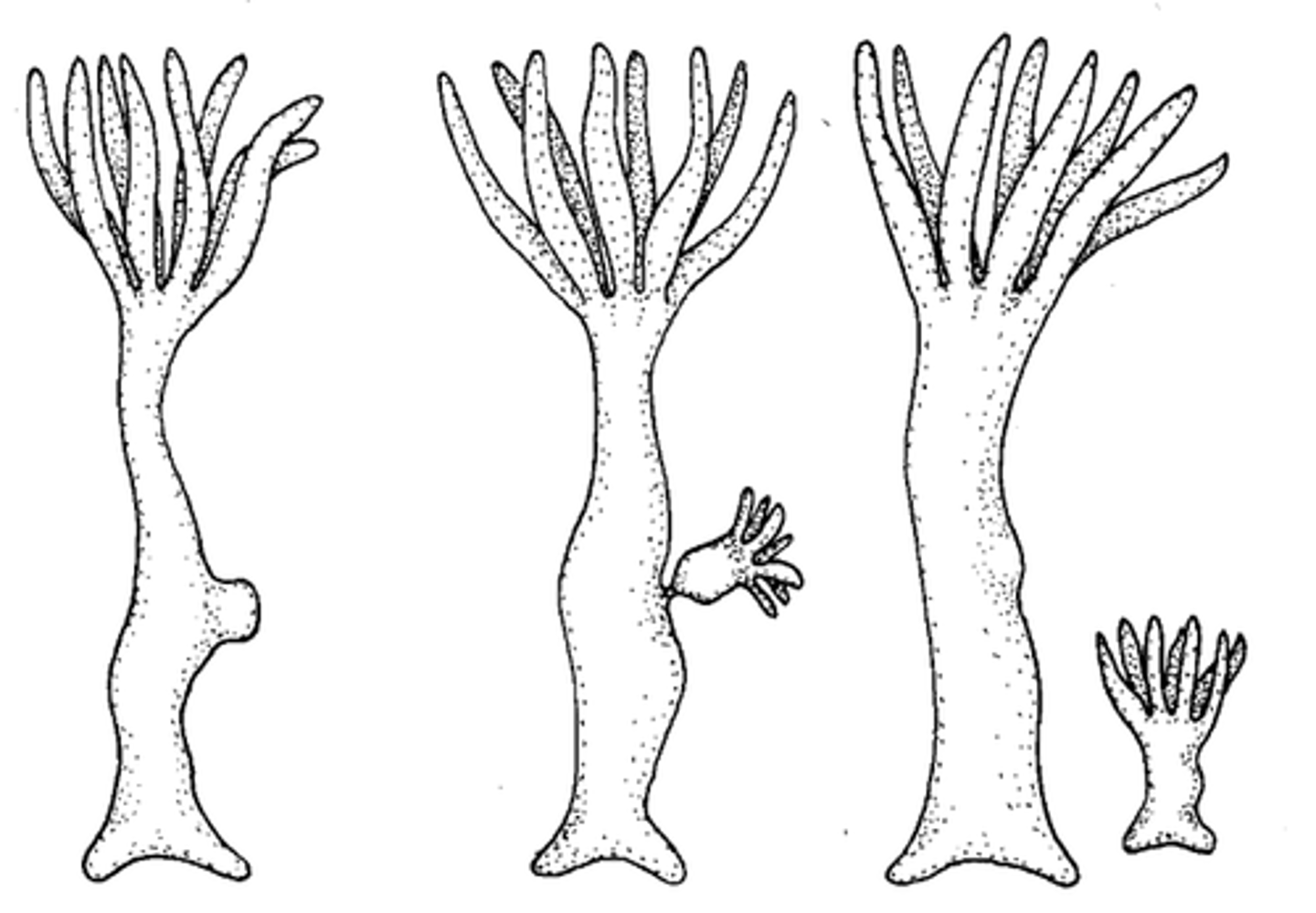
binary fission
type of asexual reproduction in which an organism replicates its DNA and divides in half, producing two identical daughter organisms

monoecious
"one house" both male and female gamete producing structures are present in the same individual
aka: hermaphroditism
dioecious
"two houses" male and female gamete producing structures are found in different organisms;
aka: separation of sexes
Describe the lifestyle of class Turbellaria
most are free-living, mostly carnivorous, monoecious
Planaria flatworms, Dugesia
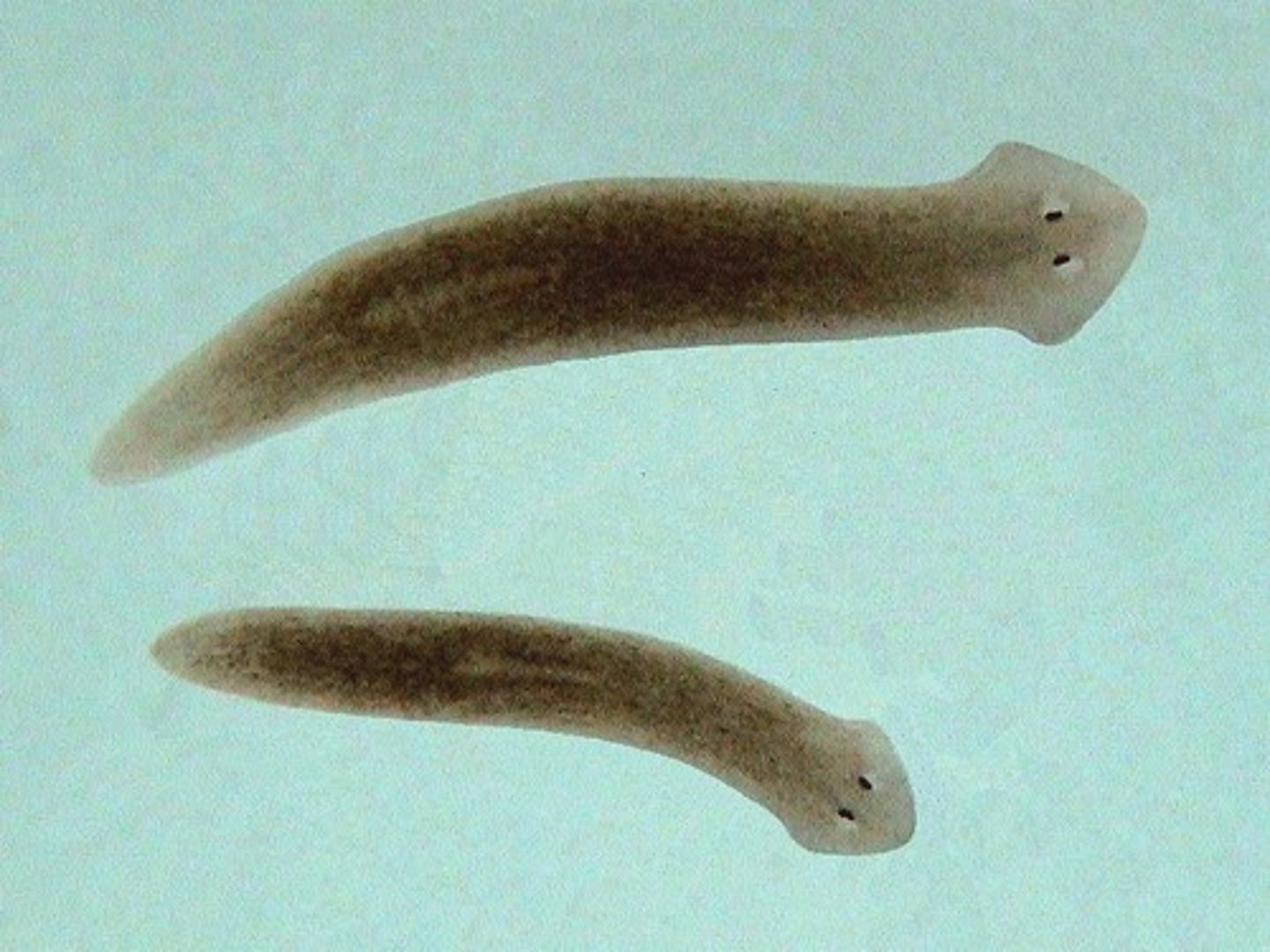
Describe the lifestyle of class Trematoda
class of parasitic flukes; have suckers for attaching to host, often have complex lifestyles involving one or more host
ex: chinese liver fluke (Clonorchis sinensis), Digenea from lab
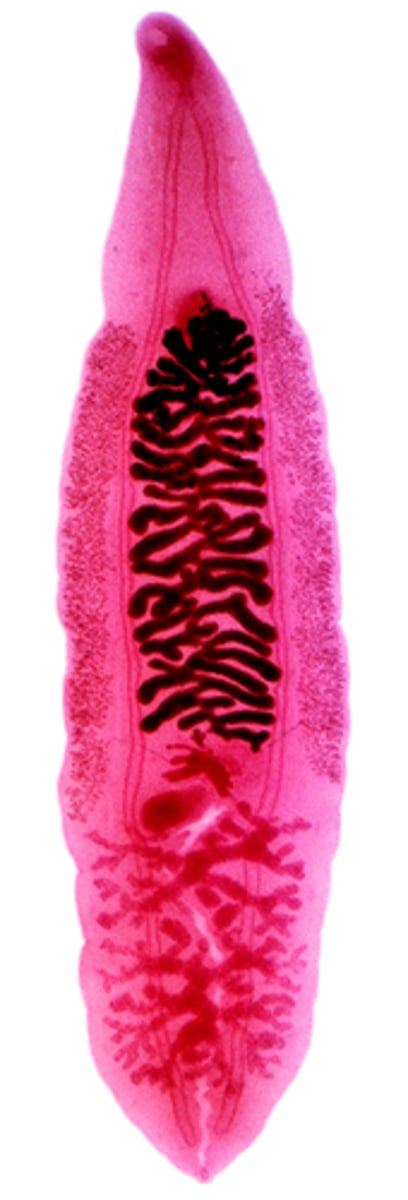
Describe the life cycle of Clonorchis sinensis
most widespread parasitic Trematoda in humans, endemic to SE Asia; contracted by eating raw/undercooked fish
life cycle:
- Fertilized egg enters water via feces
- Snail eats egg
- Larva hatches inside snail
- Larva matures into free-swimming form
- Fish eats free-swimming larva
- Larva rolls up & encysts itself into fish’s muscles & waits
- Undercooked fish is eaten by final host
- Parasite matures in final host's digestive system
- Mature fluke lives in bile duct & reproduces
- Eggs are defecated into water
- Repeat
Describe the lifestyle of class Cestoda
class of monoecious (can self-fertilize) parasitic tapeworms, have long flat bodies consisting of a head for attachment (scolex) and chain of reproductive units (proglottids)
They do not have a digestive system because they live within a host's digestive system; their body has microvilli for absorbing nutrients
ex: Taenia genus
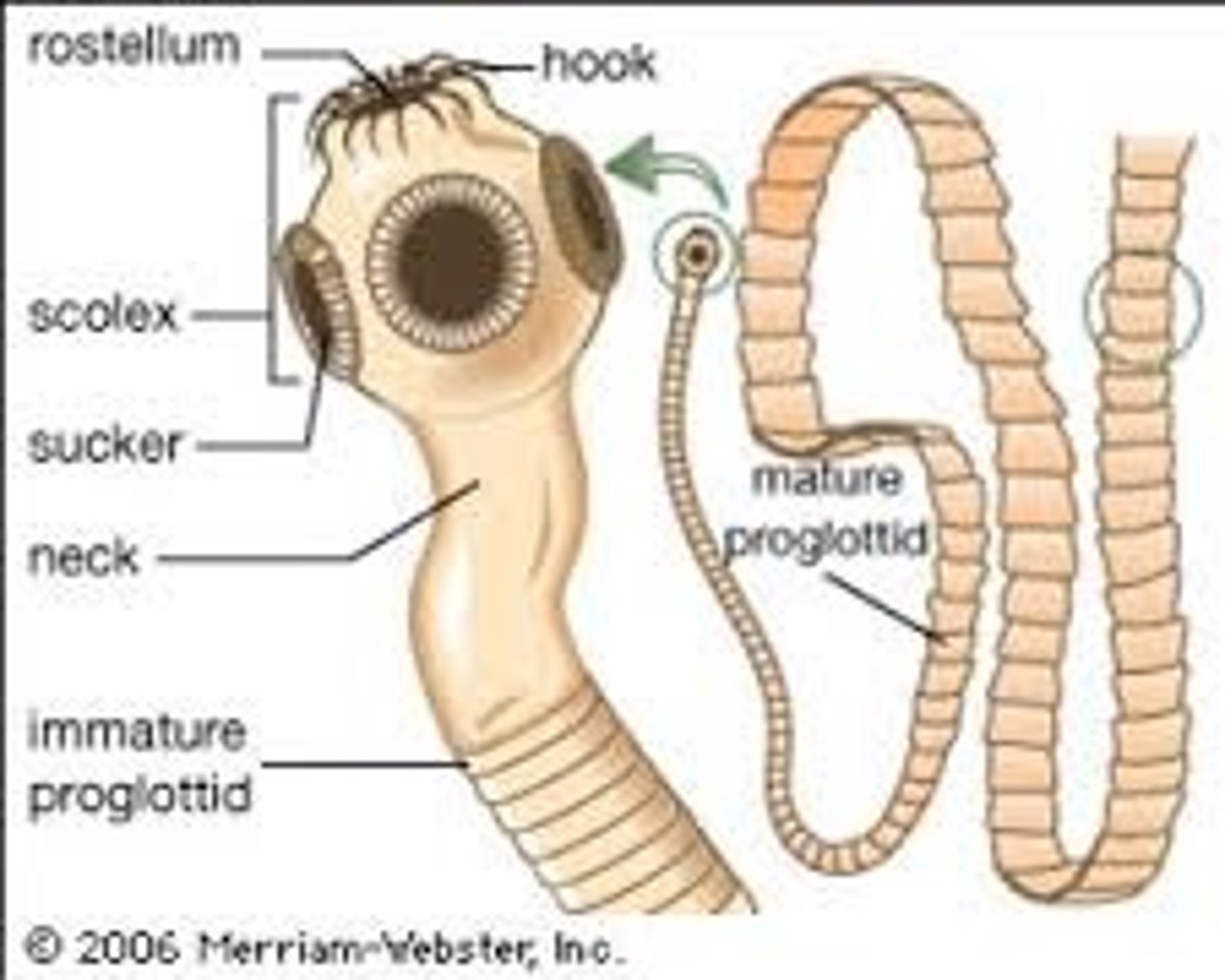
scolex
head of an adult tapeworm used for attachment; can contain suckers or hooks
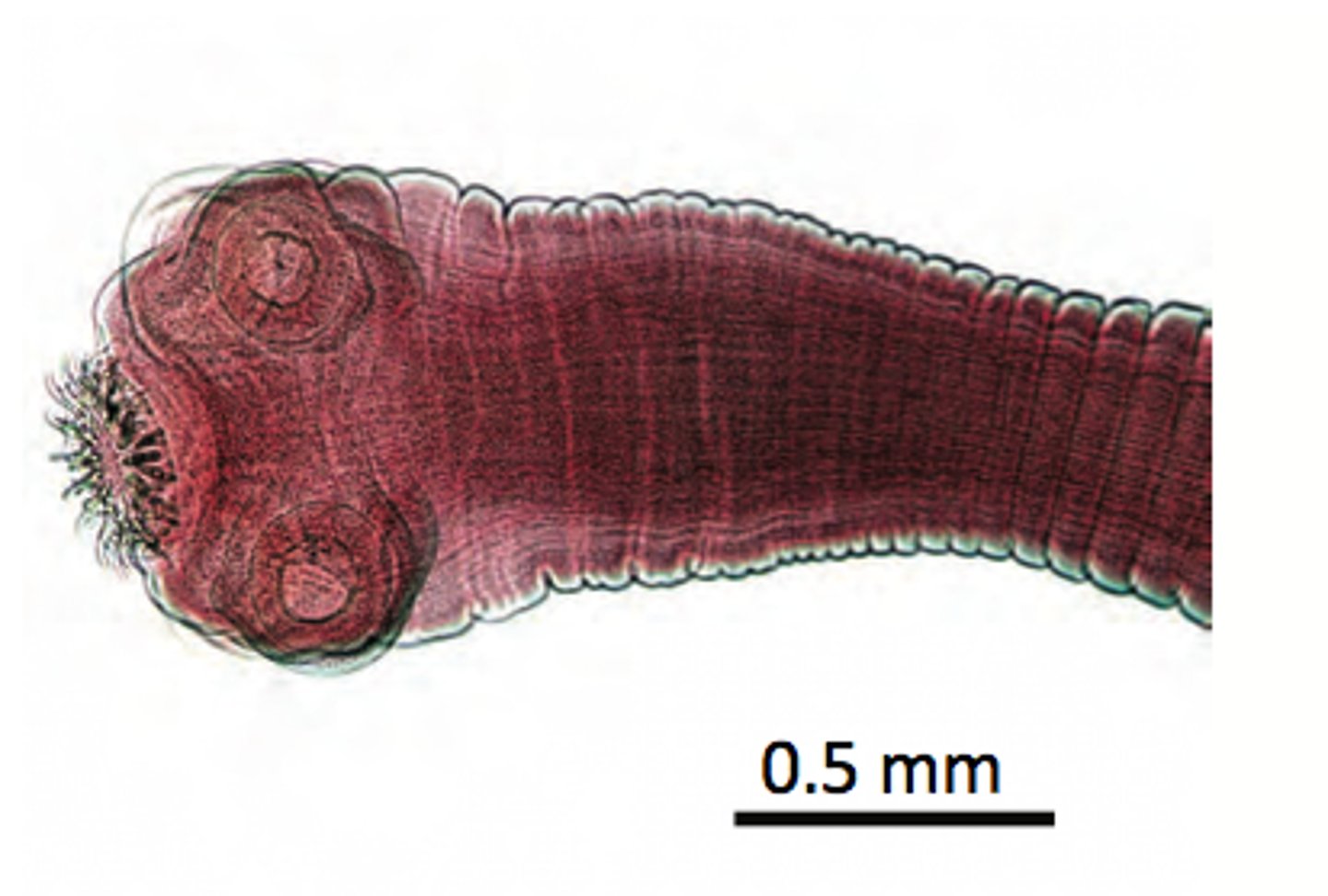
proglottids
chain of reproductive units that make up body segments of tapeworms
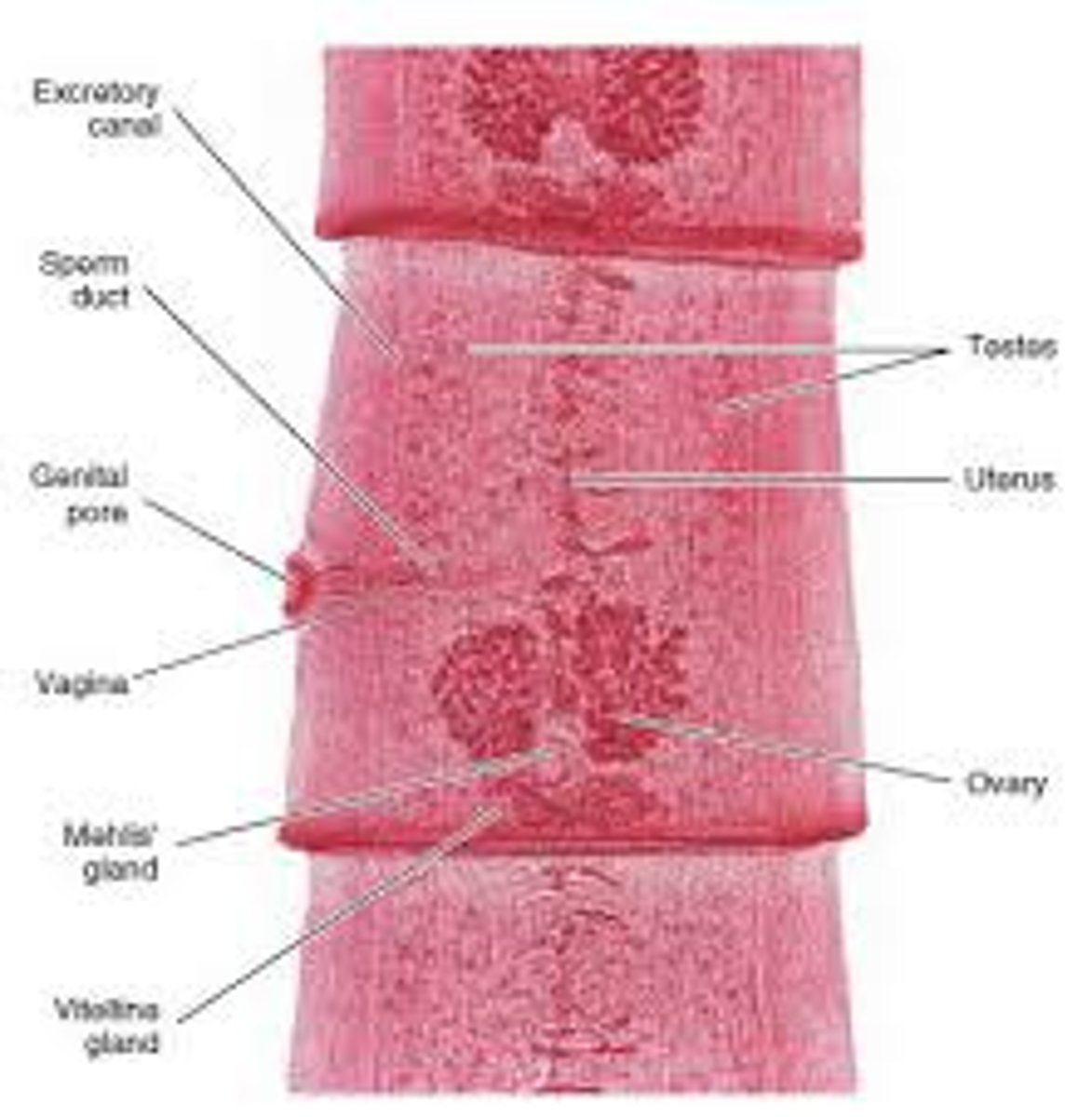
Hermaphroditism doubles the odds of successful reproduction. Why?
There is no need to locate a particular sex when looking for a mate. Each individual can either deliver or receive sperm.
Platyhelminthes body plan
- Tissue-organ grade
- Triploblastic
- Bilateral symmetry (cephalization)
- Acoelomate (no coelom)
- Incomplete gut
Describe the major features that distinguish Platyhelminthes from Porifera/Cnidaria
- Dorsoventrally flattened
- Cephalization
- Bilateral symmetry
Why do members of the Class Cestoda (tapeworms) lack a digestive system? How do they obtain nutrients?
They do not need a digestive system because they are parasites that live inside a vertebrate's digestive system, which is already doing the work breaking food down into absorbable molecules.
Their body surface is covered with microvilli to increase absorption of nutrients from the host's digestion.
What is the difference between a primary and intermediate (secondary) host?
Primary / Definitive host: where the parasite reaches sexual maturity & reproduces
Intermediate / Secondary host: a host that harbors the parasite for only a short time (usually a transitional period for developmental stage)
What is the function of the cercaria larva of the Class Trematoda?
Cercaria larvae (free-swimming) are an asexual stage in second/intermediate hosts
In Clonorchis sinensis, they pass from snails to be eaten by fish, where they en-cyst themselves (curl up and develop a protective coating) inside fish muscles and wait for the fish to be eaten by the final/definitive host.
Describe the life cycle of Taenia pisiformis.
Intermediate host:
- Proglottid sheddings are defecated onto grass by host animals, where eggs are lain on the ground
- Small mammals ingest the eggs while eating grass
Repeat
Final/definitive host:
- Cat/canids ingest an infected prey aimal
- Scolex of worm embeds itself in wall of the small intestine
- Worm grows & produces mature proglottids which shed in feces onto grass and are eaten by intermediate hosts
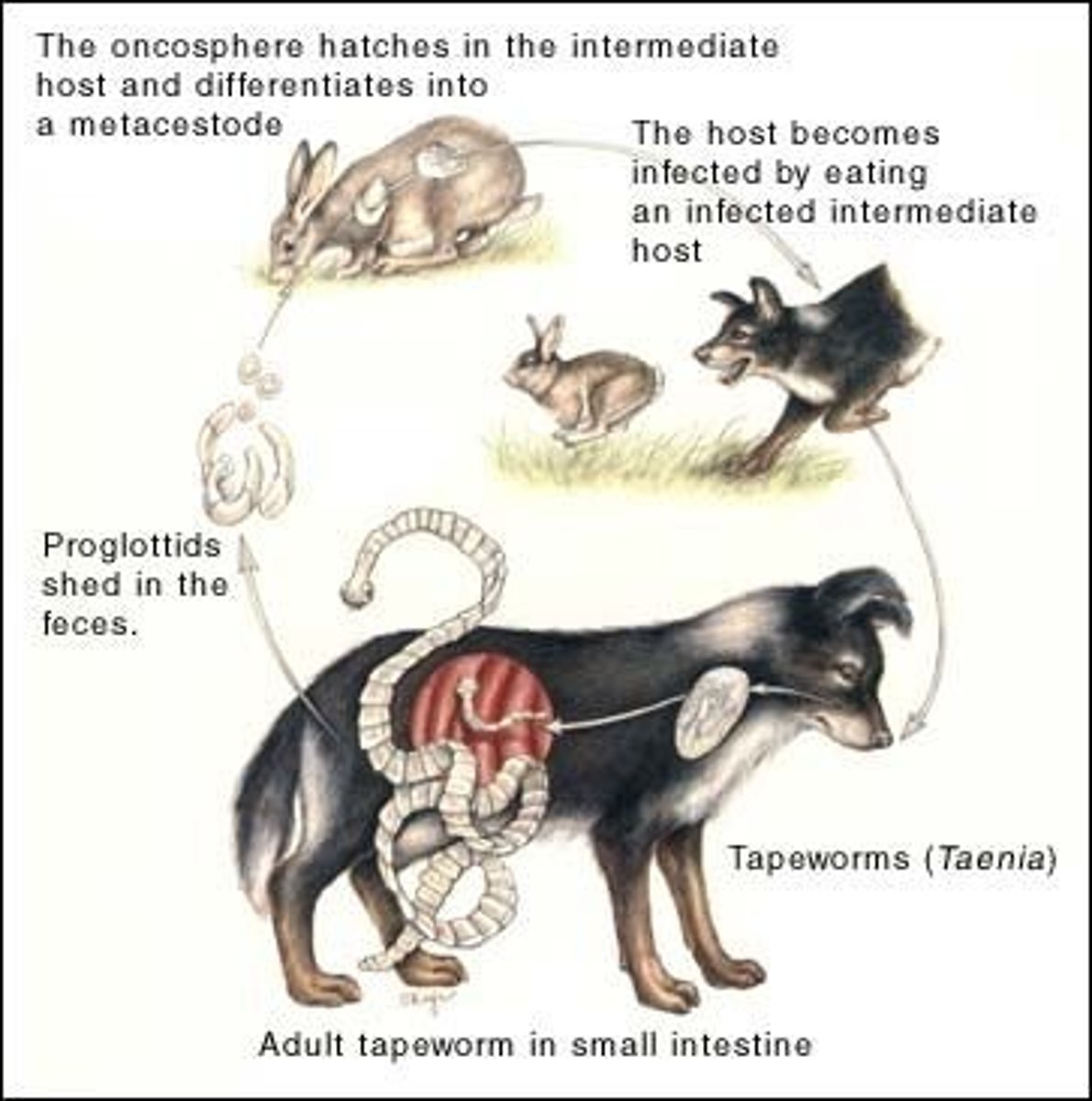
Describe Platyhelminthes excretory system
Nitrogenous wastes are removed from body via diffusion through skin, & tubules function for water balance (flame cells beat flagella to force water to pump through system)
What class within Phylum Platyhelminthes contains free living (non parasitic) individuals?
(a) Trematoda
(b) Turbellaria
(c) Cestoda
(d) Nematoda
Turbellaria
What role do proglottids play in Platyhelminthes?
(a) feeding
(b) locomotion
(c) sexual reproduction
(d) asexual reproduction
Sexual reproduction; fertilization the gravid proglottids "drop off" of the end of the worm